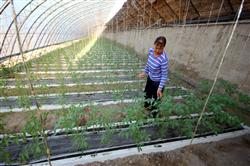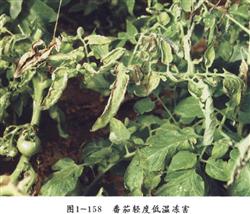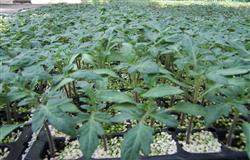There are some methods for the management of tomato after planting in spring.

1. Ploughing should be done in time after planting. Early ploughing and deep ploughing are beneficial to the increase of soil temperature and promote rapid rooting and slow seedling growth. It is more important for early-maturing cultivation. The middle ploughing should be carried out for 4 times in a row, and the depth is shallower each time. Promote the growth of adventitious roots at the base of the stem and expand the root group. 2. fertilizer and water management tomatoes need a large amount of fertilizer, but also more fertilizer-tolerant. After planting slow seedlings, the fertilizer for promoting seedlings should be applied once. Each mu can be burrowed with rotten manure 250 Mel 500 kg or ammonium sulfate 10 Mel 12.5 kg. Topdressing the second fertilizer at the beginning of the expansion of the first ear, the amount of topdressing should be increased this time, and the combination of nitrogen and phosphorus should be applied. The amount of urea and calcium superphosphate per mu should be 12.5 kg and 25 kg, respectively. When the fruit of the second ear is quite large, the third topdressing should be carried out, and the amount of fertilizer should be the same as that of the second time. It can be supplemented by extra-root topdressing or foliar fertilization in the peak fruiting period. 3. Single-pole pruning or double-stem pruning can be used to adjust non-self-capping tomatoes. Single stem pruning: about 7 ears per plant. The first to the fourth ear, leaving 2-3 fruits per panicle; after the fifth ear, leaving 3-4 fruits per panicle, the excess was removed. Timely erase lateral buds and timely flower thinning and fruit thinning to keep the fruit uniform. 4. The main diseases of pest control are early blight, leaf mold, gray mold and canker. At the initial stage of the disease, Bordeaux solution of 1 ∶ 2 ∶ 200 can be used for control, and in the later stage, 70% methyl topiramate and 75% chlorothalonil can be sprayed. The main pests are cotton bollworm, cabbage green insect, aphid and so on, which harm leaves and fruits. Tianrun insecticidal No. 1 or Tianrun insecticidal No. 2 has better control effect on Helicoverpa armigera and cabbage green insect. 5. There are many reasons for falling flowers and its prevention and control, which can be summed up in the following two aspects: (1) malnutrition. (2) Flowers with reproductive dysplasia. To prevent falling flowers, we must fundamentally strengthen cultivation management and cultivate strong seedlings, timely planting and pay attention to root protection, strengthen fertilizer and water management, prevent soil drought and stagnant water, ensure adequate nutrition, prevent excessive application of nitrogen fertilizer, and adjust plants in time.
- Prev

Management techniques of Tomato after Frost injury in greenhouse
The cultivation of tomato in greenhouse often leads to different degrees of freezing injury due to abnormal weather changes. In those who were lightly frozen, the growth stagnated and the plants yellowed. After individual restoration of growth, the plants were short, the leaves were small, the nodes were short, the flower topping appeared, the yield was low and the quality decreased. For those who are frozen, if they are not remedied in time, they will not be able to grow and wither.
- Next

How to raise Tomato seedlings in Autumn and Winter
1. Seedling bed preparation: the seedling period of tomato in autumn and winter in solar greenhouse is in the high temperature and rainy season. the seedling bed should have the conditions of anti-rain and waterlogging, ventilation and cooling, and the seedlings must be covered with film before the seedlings can adapt to the greenhouse conditions. It is best to choose a dry, well-ventilated area with an arch 1.5 to 2 meters high.
Related
- Where is it suitable to grow horseradish in China? it is expected to see the middle altitude horseradish in Alishan.
- How to prevent tomato virus disease reasonably? (Control methods included)
- Many people like to plant towel gourd on the balcony. What are the main points of this method and management?
- What crops can chili peppers be mixed with?
- Fertilization techniques and matters needing attention in Tomato
- What are the grafting techniques for peach seedlings in spring?
- Harm and control methods of root swelling disease of Chinese cabbage
- What are the pests of sweet potatoes? How to prevent and cure it?
- Symptoms, causes and Control methods of navel Rot in Tomato
- The cause of "Cucumber rotten bibcock" in Farmers' planting Cucumber and its Control Plan

